 |
| INVITED |
|
 |
| . |
|
|
Hiroki Ago
Kyushu University, Japan
Invited – Plenary Session
Prof. Hiroki Ago received his PhD from Kyoto University in 1997. After staying at Cavendish Laboratory, Cambridge University during 1997-1999 as a postdoc researcher, he moved to National Institute of Advanced Industrial Science and Technology (AIST), Tsukuba as a researcher. In 2003, he moved to Kyushu University and now is a distinguished professor of Kyushu University. His current research focuses on science and applications of nanomaterials, particularly graphene and related 2D materials. He has published over 170 articles. He received Iijima Award from the Fullerene-Nanotube Research Society of Japan (2006), Young Scientist Award from the MEXT, Japan (2008), and Best Paper Award from the Japan Society of Applied Physics (2014). Now he is a leader of the group research project “Science of 2.5 Dimensional Materials” supported by Ministry of Education, Science, and Technology (MEXT), Japan
|
|
|
|
|
 |
| WORKSHOP 2 |
|
 |
| . |
|
|
Jong-Hyun Ahn
Yonsei University, South Korea
Invited – Workshop 2: 2D materials for Quantum Technologies
Jong-Hyun Ahn received Ph.D degree at POSTECH, Korea in 2001. He joined SKKU as an assistant professor in 2008 after a postdoctoral experience at the University of Illinois at Urbana-Champaign for several years and moved to Yonsei University in 2013. Currently, he holds Yonsei Fellow at Yonsei University and is a member of the Korean Academy Science and Technology. His research focuses on fundamental and applied aspects of graphene and 2D materials.
|
|
|
|
|
 |
| INDUSTRIAL FORUM |
|
 |
| . |
|
|
Hassan Arafat
RIC2D, Khalifa University, United Arab Emirates
Invited - Industrial Forum
Prof. Arafat is the Senior Director, Research and Innovation Center for Graphene and 2D Materials (RIC2D) and professor of chemical engineering at Khalifa University in Abu Dhabi, UAE, where he is working since 2010. He received a Ph.D. and BSc in Chemical Engineering from the Univ. of Cincinnati (USA) (2000) and the Univ. of Jordan (1996), respectively. He is a recipient of several research fellowships by the US National Academy of Science (USA), the Open Society Foundation (USA) and DAAD (Germany). Through his career thus far, he supervised 58 postdoctoral fellows and graduate students. His research was published in 270+ book chapters, journal papers, and conference presentations, in addition to two US patents. He was invited to deliver 60 keynote and invited talks worldwide
|
|
|
|
|
 |
| WORKSHOP 3 |
|
 |
| . |
|
|
Claudia Backes
University of Kassel, Germany
Invited – Workshop 3: 2DM Chemistry and Energy Applications
Claudia is a chemist by training and has received her Ph.D with honors in 2011 from the University of Erlangen, Germany. After some time as deputy executive director in the Erlangen Cluster of Excellence “Engineering of Advanced Materials” Claudia received a fellowship grant from the German Research Foundation (DFG) in 2012 and moved to Jonathan Coleman’s groups at Trinity College Dublin, Ireland. In 2015, she returned to Germany and started her independent research at the Chair of Applied Physical Chemistry at Heidelberg University funded through the prestigious Emmy Noether funding from the German Research Foundation from 2016. In 10/2021, she was appointed Chair Professor of Physical Chemistry of Nanomaterials at Kassel University. Claudia’s research interests are in liquid exfoliation, nanosheet size control and size-dependent properties, chemical modification and production of composites and hybrid structures.
|
|
|
|
|
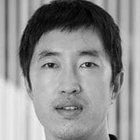 |
| WORKSHOP 5 |
|
 |
| . |
|
|
Sang-Hoon Bae
Washington University in Saint Louis, USA
Invited – Workshop 5: 2D Materials in India Showcase Session
Sang-Hoon Bae earned a Ph.D. in materials science and engineering from University of California, Los Angeles. He is currently an Assistant Professor in Washington University in St. Louis after a postdoc experience at Massachusetts Insitute of Technology. His team is actively working on materials growth including 2D materials and 3D nanomembranes and developing new types of heterostructures made of them. Also, his team investigates various physical coupling phenomena in the heterostructures that have a potential to outperform conventional coupling phenomena. Based on unique phenomena, his team works on demonstrating interesting electronics and photonic devices.
|
|
|
|
|
 |
| WORKSHOP 10 |
|
 |
| . |
|
|
Felix Baumberger
University of Geneva, Switzerland
Invited – Workshop 10: 2D water and nanofluidics
Felix Baumberger obtained his PhD from the University of Zurich for work on surface states in 1D superlattices. He subsequently moved into correlated electron physics, first as postdoc with ZX Shen in Stanford and then as Lecturer at the University of St Andrews, UK. Since 2012 he is professor of physics at the University of Geneva with a joint affiliation at the Swiss Light Source. Felix pioneered laser-based micro-focus angle resolved photoemission for electronic structure studies of van der Waals heterostructures. He is also interested in bulk correlated electron systems and was responsible for the concept of the ARPES beamline I05 at Diamond Light Source.
|
|
|
|
|
 |
| INDUSTRIAL FORUM |
|
 |
| . |
|
|
Mark A. Bissett
Molymem, UK
Invited - Industrial Forum
Dr. Bissett is currently a Reader in Nanomaterials in the Department of Materials at the University of Manchester. He has an academic research group with significant government and industrial grant funding where he researches the synthesis and formulation of nanomaterials for a wide variety of applications. Alongside his academic career he has successfully patented technology on the use of 2D nanomaterials for water filtration and spun this out into a company (Molymem Ltd.), where he is a Director and Chief Scientific Officer.
|
|
|
|
|
 |
| INVITED |
|
 |
| . |
|
|
Marc W. Bockrath
The Ohio State University, USA
Invited – Plenary Session
|
|
|
|
|
 |
| WORKSHOP 7 |
|
 |
| . |
|
|
Lapo Bogani
University of Oxford, UK
Invited – Workshop 7: Advanced Characterization of 2DM and heterostructures
Lapo Bogani, obtained his PhD from Florence University (Italy) in 2006 and later moved to Institut Néel, Grenoble, France, as Individually-driven Marie Curie Fellow. In 2009, he became Sofja Kovalevskaja group leader of the Alexander von Humboldt Stiftung at Stuttgart University, Germany, and in 2014 he moved to the University of Oxford as Royal Society University Research Fellow, to later became associate (2017) and later full professor (2020).
|
|
|
|
|
 |
| INDUSTRIAL FORUM |
|
 |
| . |
|
|
Francesco Bonaccorso
BeDimensional, Italy
Invited - Industrial Forum
Francesco Bonaccorso gained the PhD from the University of Messina. In 2009 he was awarded a Royal Society Newton International Fellowship at Cambridge University, and elected to a Research Fellowship at Hughes Hall, Cambridge, where he also obtained a MA. He is the Scientific Director of BeDimensional SpA and visiting Scientist at the Istituto Ital-iano di Tecnologia. He is author of 17 patent families and more than 200 publications that have been cited more than 40000 times. He was featured as 2016 Emerging Investigator by J. Mater. Chem. A and in 2019 by ChemPlusChem. In 2018 he was recognized as Highly cited Scientist by Clarivate Analytics. In 2019 he received the Magister Peloritanus by Ac-cademia Peloritana dei Pericolanti and ExAllievi Eccellenti by the University of Messina. He co-founded Cambridge Graphene Ltd and BeDimensional SpA.
|
|
|
|
|
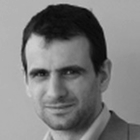 |
| WORKSHOP 9 |
|
 |
| . |
|
|
Emiliano Bonera
Università degli Studi di Milano-Bicocca, Italy
Invited – Workshop 9: 2DM based composites, coatings, foams and membranes
Emiliano Bonera graduated at the University of Pavia in 1998 after being also an exchange student at the University of Strathclyde in Glasgow. He obtained his Ph.D. in 2002 from the University of Leeds with a thesis about micro- and near-field optical characterisation of microelectronic materials. From 2002 he was a post-doc at the Materials and Devices for Microelectronics laboratory of CNR, where since 2004 he became a research fellow. Since 2007 he joined the Università di Milano Bicocca as an assistant professor. In 2017 he became associate professor. His interests span mainly on Raman spectroscopy, infrared spectroscopy, internal photoemission spectroscopy, photoluminescence spectroscopy, and near-field optical microscopy. He applied these techniques to the study of semiconductors, insulators, and their nanostructures for applications in micro- and optoelectronics. He holds an h index of 17 from more than 60 publications in international peer-reviewed journals. He teaches in courses of advanced laboratory physics, semiconductors, optics.
|
|
|
|
|
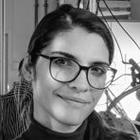 |
| WORKSHOP 7 |
|
 |
| . |
|
|
Gabriela Borin Barin
EMPA, Switzerland
Invited – Workshop 7: Advanced Characterization of 2DM and heterostructures
Gabriela Borin Barin is the group leader of the Materials to Devices group in the nanotech@surfaces Laboratory at Empa. Before that, she received her Ph.D. in Materials Science and Engineering in a joint project between the Federal University of Sergipe in Brazil and the Massachusetts Institute of Technology (MIT, US), followed by a postdoc at Empa in the group of Prof. Roman Fasel focused on the synthesis and transfer of graphene nanoribbons for ex-situ characterization and device application. Gabriela has a strong background in experimental chemistry and materials science and her research topics include the synthesis, characterization, and device integration and application of low-dimensional carbon materials.
|
|
|
|
|
 |
| INVITED |
|
 |
| . |
|
|
Vincent Bouchiat
Grapheal, France
Invited – Plenary Session
Vincent Bouchiat is the CEO of Grapheal, a company spin-off from Neel Institute focusing on bioelectronic and healthcare applications of graphene. He is on leave from the French National Research Center (CNRS) at Grenoble, where he has a permanent position since 1997. He received an engineer degree from ESPCI in 1993 and a Master Degree from the University of Paris, Pierre & Marie Curie the same year. He has completed his Ph.D. on quantum devices at CEA-Saclay in 1997 under supervision of Michel Devoret and Daniel Estève. He got the Visiting Miller Professorship Award from University of California, Berkeley in 2007, and the Lee Hsun Research Award from the Chinese Academy of Sciences (2017). He co-authored more than 100 publications with over 4000 citations and hold 9 international patents.
|
|
|
|
|
 |
| INDUSTRIAL FORUM |
|
 |
| . |
|
|
Adelina Braun
Merck KGaA, Germany
Invited - Industrial Forum
Dr. Adelina Braun completed her doctorate in Materials Science at Saarland University, Germany with a thesis entitled, “Nanomaterials for Optoelectronic Applications”. She then gained professional experience at the European Commission’s Joint Research Centre working on nanomaterials research projects. She joined 10 years ago the Technology Management team at Merck KGaA and handles the Materials Science portfolio for all of EMEA.
|
|
|
|
|
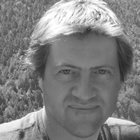 |
| WORKSHOP 7 |
|
 |
| . |
|
|
Stefan T. Bromley
Universitat de Barcelona, Spain
Invited – Workshop 7: Advanced Characterization of 2DM and heterostructures
Stefan Bromley is an ICREA (Catalan Institution for Research and Advanced Studies) Professor and heads the Nanoclusters and Nanostructured Materials (www.ub.edu/nnmgroup) group within the Institute of Theoretical and Computational Chemistry at the University of Barcelona. The group’s main focus is on developing and using computational modelling methods to design and understand nanoscale/low dimensional materials. He has published over 200 research articles and co-edited two books on computational modelling of nanoparticles and nanomaterials
|
|
|
|
|
 |
| INDUSTRIAL FORUM |
|
 |
| . |
|
|
Michele Buscema
Applied Nanolayers B.V., The Netherlands
Invited - Industrial Forum
Michele has a PhD in Applied Physics from Delft University of Technology where he studied on the opto-electronic properties of 2D materials, he is (co)-author of 18 peer-reviewed papers, and has an MSc in Materials Engineering (cum laude) from the Politecnico di Milano. He joined ANL in 2015 and is currently responsible for a variety of topics: leading the team responsible graphene production and development, custom foundry services (TMDCs) and automation of quality control systems.
|
|
|
|
|
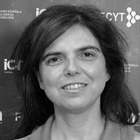 |
| WORKSHOP 1 |
|
 |
| . |
|
|
Maria Jose Calderon
CSIC, Spain
Invited – Workshop 1: Twistronics, 2D Magnetism and Topological Phenomena
María José Calderón received a PhD degree from the Universidad Autónoma de Madrid in 2001. She joined the Instituto de Ciencia de Materiales de Madrid, ICMM-CSIC, in 2007 after a post-doctoral experience at the University of Cambridge (UK) and the University of Maryland (US). Her current research interests range from electronic correlations in novel superconductors, like twisted bilayer graphene, to the study of semiconductors and hybrid semiconductor-superconductor systems for quantum computing. In the past she also contributed to the understanding of the bulk properties of colossal magnetoresistance materials, oxide heterostructures, Fe based superconductors and diluted magnetic semiconductors. She is a member of the editorial board of Physical Review B and of the European Physical Society Condensed Matter division. She is currently the director of the Master’s degree on Quantum Technologies coordinated by the International University Menéndez Pelayo and participated by CSIC and various Spanish Universities.
|
|
|
|
|
 |
| WORKSHOP 5 |
|
 |
| . |
|
|
Daniel Carriazo
CIC EnergiGUNE, Spain
Invited – Workshop 5: 2D Materials in India Showcase Session
Dr. Daniel Carriazo obtained his degree in chemistry in 2003 from the University of Salamanca including a course abroad at the University of Bristol (UK) where he performed his bachelor thesis in the Centre for the Organized Matter Chemistry. In 2008 he obtained his PhD from the University of Salamanca working at the Inorganic Chemistry department on the immobilization of polyoxometalates within layered double hydroxides and/or porous oxides for catalytic applications. In 2009 he joined to the Bioinspired Materials group at the ICMM-CSIC headed by Dr. Francisco del Monte as a "Juan de la Cierva" postdoctoral fellow. In 2011 he was visiting fellow in the Multifunctional Materials group headed by Prof. Markus Niederberger at the ETH-Zürich (Switzerland). In 2012 returned to the Institute of Materials Science of Madrid (CSIC) with a "JAE-Doc" postdoctoral fellowship. In 2004 Dr. Carriazo joined CIC energiGUNE as an Ikerbasque Researcher. Since September 2017 he leads the research on Supercapacitor. His current scientific interest is focused on the synthesis of nanostructured carbons and carbonaceous-metal oxide composite materials with potential application as electrodes for energy storage devices.
|
|
|
|
|
 |
| INVITED |
|
 |
| . |
|
|
Cinzia Casiraghi
University of Manchester, UK
Invited – Plenary Session
Prof Casiraghi holds a Chair in Nanoscience at the Department of Chemistry, University of Manchester (UK). She received her B.Sc. and M.Sc. in Nuclear Engineering from Politecnico di Milano (Italy) and her Ph.D. in Electrical Engineering from the University of Cambridge (UK). In 2007, she was awarded with the prestigious Kovalevskaja Award (1.5M Euro). In 2010 she joined the department of chemistry at the University of Manchester. She is recipient of several awards, including the ERC Consolidator (2015), ERC Proof of Concept (2020), ERC Advanced grants (2022), as well as the Leverhulme Award in Engineering (2016, 100K GBP), and the RSC 2020 Gibson-Fawcett Award. Her current research work focuses on the development of biocompatible 2D inks and their use in printed electronics and biomedical applications.
|
|
|
|
|
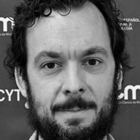 |
| WORKSHOP 8 |
|
 |
| . |
|
|
Andres Castellanos Gomez
ICMM-CSIC, Spain
Invited – Workshop 8: Ferroelectrics & Piezoelectric 2DM
Dr. Andres Castellanos-Gomez is a Research Scientist in the Spanish National Research Council (Consejo Superior de Investigaciones Científicas, CSIC). He explores novel 2D materials and studies their mechanical, electrical and optical properties with special interest on the application of these materials in nanomechanical and optoelectronic devices. Among other recognitions has been received the National Research Award of Spain (2023) and the Miguel Catalan award of the Madrid region (2023), has been included in the Highly Cited Researchers 2018, 2019, 2020, 2021, 2022 and 2023 lists of Clarivate/WOS and has been also recognized with the Young Researcher Award (experimental physics) of the Royal Physical Society of Spain (2016).
|
|
|
|
|
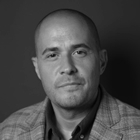 |
| INDUSTRIAL FORUM |
|
 |
| . |
|
|
Umberto Celano
Arizona State University, USA
Invited - Industrial Forum
Umberto Celano is an associate professor with Ira A. Fulton Schools of Engineering at Arizona State University and metrology consultant for imec (Belgium). His research interests lie at the intersection of condensed matter physics, semiconductor technology, and materials analysis, with a focus on nanoelectronics. Prior to joining ASU, Umberto worked full-time at imec (Belgium) and Stanford University accumulating over a decade of expertise in semiconductor process characterization, materials analysis, and devices failure analysis.
|
|
|
|
|
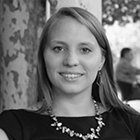 |
| WORKSHOP 4 |
|
 |
| . |
|
|
Aurélie Champagne
UC Berkeley , USA
Invited – Workshop 4: Theory of 2D Materials and Devices Simulation
Aurélie Champagne is a postdoctoral researcher in the group of Jeffrey B. Neaton at the Lawrence Berkeley National Laboratory. In 2020, she received her Ph.D. in science engineering and technology from the Institute of Condensed Matter and Nanosciences at UCLouvain (Belgium) where she studied the physical properties of a novel family of two-dimensional materials, MXenes, combining experiments and ab initio calculations. Aurélie Champagne’s current research interests include the development and application of theoretical models to predict the electronic, optical, and transport properties in low-dimensional materials, primarily using ab initio Green’s function formalisms and computational methods, such as the GW approximation and the Bethe Salpeter equation approach.
|
|
|
|
|
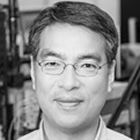 |
| INVITED |
|
 |
| . |
|
|
Hyeonsik Cheong
Sogang University, South Korea
Invited – Plenary Session
Hyeonsik Cheong is a professor of physics at Sogang University, where he is currently serving as the Dean of the Graduate School. He received his B.S. degree in physics from Seoul National University and A.M. and Ph.D. in physics from Harvard University. After working at Harvard as a postdoctoral fellow and as a postdoc and then as a senior scientist at National Renewable Energy Laboratory in Golden, Colorado, he joined the Department of Physics at Sogang University in 1999. At Sogang University, he has served as Director of International and Public Relations, Chair of the Department of Physics, Vice President for Budget and Planning, and Vice President of Research. His research interest includes spectroscopic studies of graphene and 2-dimensional materials, semiconductor nanostructures, and solar cell materials. He has served as the president of Korean Graphene Society from 2015 to 2016 and as the chair of the Division of Applied Physics of the Korean Physical Society from 2016 to 2020. He won the Korea Science Award (presidential award) in 2022.
|
|
|
|
|
 |
| INDUSTRIAL FORUM |
|
 |
| . |
|
|
Manish Chhowalla
University of Cambridge, UK
Invited - Industrial Forum
Manish Chhowalla is the Goldsmiths’ Professor of Materials Science at the University of Cambridge. His research interests are in the fundamental studies of atomically thin two-dimensional transition metal dichalcogenides (TMDs). In particular, his group studies the optical and electronic properties of different phases of 2D TMDs. He has demonstrated that it is possible to induce phase transformations in atomically thin materials and utilize phases with disparate properties for field effect transistors, catalysis, and energy storage. Prof Chhowalla is a Fellow of the Materials Research Society, Institute of Physics, the Royal Society of Chemistry and Churchill College. He was the founding Editor in Chief of Applied Materials Today and is now the Associate Editor of ACS Nano. He has been on the Clarivate Highly Cited Researchers since 2016. Prior to Cambridge, Prof. Chhowalla was a Distinguished Professor at Rutgers University in New Jersey, USA. He was also the Director of the Institute of Advanced Materials, Devices & Nanotechnology at Rutgers. Before that, he was a doctoral student in the Electrical Engineering Department at the University of Cambridge and Churchill College. After his doctorate and Royal Academy of Engineering Postdoctoral Fellowship, Professor Chhowalla briefly worked in industry where he developed applications for “amorphous diamond”.
|
|
|
|
|
 |
| INVITED |
|
 |
| . |
|
|
Camilla Coletti
Istituto Italiano di Tecnologia (IIT), Italy
Invited – Plenary Session
Camilla Coletti is a tenured Senior Scientist of the Istituto Italiano di Tecnologia (IIT) and principal investigator of the research line 2D Materials Engineering. She is the coordinator of the Center for Nanotechnology Innovation (CNI@NEST) of Pisa and of the Graphene Labs. She has been hired by IIT in 2011 after being an Alexander von Humboldt postdoctoral fellow at the Max Planck Institute for Solid State Research of Stuttgart (Germany). She received her PhD degree from the University of South Florida in 2007 and her MS degree from the University of Perugia in 2004 (both in Electrical Engineering). She is expert in the synthesis of highly-crystalline 2D materials via chemical vapour deposition (CVD) and in the investigation of their electronic, chemical and structural properties. Her research is focused on: (i) synthesis and integration of scalable 2D materials for optoelectronics, photonics and biomedicine; (ii) engineering the interface and properties of 2D heterostructures. Overall, she is author of more than 150 peer-reviewed publications, authored 4 book chapters, edited 1 book, filed several international patents (holds 3) and delivered more than 50 invited talks at international conferences.
|
|
|
|
|
 |
| WORKSHOP 8 |
|
 |
| . |
|
|
Sonia Conesa Boj
TU Delft, The Netherlands
Invited – Workshop 8: Ferroelectrics & Piezoelectric 2DM
Prof. Sonia Conesa-Boj obtained her Ph.D. in Nanoscience and Nanotechnology at the University of Barcelona (Spain) in 2011. Afterwards she moved to a postdoctoral research position at EPFL Lausanne, funded by a Marie-Heim Vogtlin personal fellowship awarded by the Swiss National Science Foundation. After a second postdoc in The Netherlands, in 2016 Dr. Conesa-Boj became Assistant Professor at the Department of Quantum Nanoscience and the Kavli Instiuture of Nanoscience at TU Delft, and since 2020 she's tenured Associate Professor there. The focus of her research is developing novel approaches for the growth and characterisation of low-dimensional nanoscale materials, from nanowires to van der Waals layered materials. She has demonstrated how the exploitation of state-of-the-art Transmission Electron Microscopy techniques provide a unique window to unravel the physical properties of novel nanomaterials. Dr. Sonia Conesa-Boj is the author of more than 40 peer-reviewed publications and her research has been supported, among others, by the award of an ERC Starting Grant and a Dutch "Top Kennis en Innovatie" Consortium grant.
|
|
|
|
|
 |
| WORKSHOPS 5 & 9 |
|
 |
| . |
|
|
Eugenio Coronado
UV - Instituto de Ciencia Molecular (ICMol), Spain
| Invited |
- Workshop 5: 2D Materials in India Showcase Session |
|
- Workshop 9: 2DM based composites, coatings, foams and membranes |
With over 580 publications amassing 34.392 citations and an H-index of 91, his career has always been characterized by a high interdisciplinarity and impact in chemistry, physics and materials science. Coronado has been at the forefront of Molecular Magnetism during the last 25 years making seminal contributions in the chemical design, physical characterization and theoretical modelling of molecular nanomagnets and multifunctional materials. He leads two ERC AdG in Molecular Spintronics and 2D materials. His relevance goes well beyond Molecular Magnetism and is also strongly appreciated in the areas of Polyoxometalate Chemistry, Molecular Conductors and Superconductors, Molecular Electronics and, more recently, Molecular Spintronics, Quantum Computing (Magnetic Molecules as qubits) and 2D materials. Eugenio Coronado is the Director of the Molecular Science Institute (ICMol) at the University of Valencia and of the European Institute of Molecular Magnetism (EIMM).
|
|
|
|
|
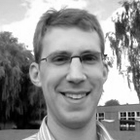 |
| WORKSHOP 4 |
|
 |
| . |
|
|
Simon Dubois
UCLouvain, Belgium
Invited – Workshop 4: Theory of 2D Materials and Devices Simulation
Simon M.-M. Dubois earned his Ph.D. from UCLouvain (Belgium), focusing on the theoretical description of electronic transport in nanostructures. Following this, he joined the Cavendish Laboratory at the University of Cambridge in 2010, where he contributed to the development of novel electronic structure prediction algorithms. In 2015, he was awarded a Belgian FNRS fellowship to explore spintronics phenomena in 2D systems. Transitioning in 2018, he became a member of the CNRS/Thales unité mixte de physique (now the Albert Fert Lab), concentrating on integrating 2D materials into magnetic tunnel junctions. Presently, he serves as a senior research associate at UCLouvain. His research focuses on elucidating electronic and spin phenomena within complex and defective systems, including interfaces and low-dimensional heterostructures
|
|
|
|
|
 |
| INDUSTRIAL FORUM |
|
 |
| . |
|
|
Salim El Kazzi
AIXTRON, Germany
Keynote - Industrial Forum
Salim El Kazzi leads the 2D product management at AIXTRON, the leading provider of deposition equipment of the compound semiconductor industry. In 2012, he received his Ph.D. from IEMN-Lille France, specializing in III-V growth for their integration on Silicon. He then joined imec in Belgium contributing to the CMOS logic program on III-V and 2D deposition working on both research & industrial equipment. In 2019, he pioneered the 2D activities at Applied Materials – NUS Advanced Corporate Laboratory Singapore, where he explored the use low dimensional materials for both FEOL and BEOL applications.
|
|
|
|
|
 |
| WORKSHOP 4 |
|
 |
| . |
|
|
Vladimir Falko
The University of Manchester, UK
Invited – Workshop 4: Theory of 2D Materials and Devices Simulation
Professor Falko is one of the UK's leading condensed matter theorists. He has made substantial contributions towards the understanding of the electronic and optical properties of graphene, including the discovery of bilayer graphene. He has played a pivotal role in shaping the European graphene and other two-dimensional material research community, establishing the 'Graphene Week' conference series and leading the European Graphene Flagship work package: 'Fundamental Science of Graphene and 2D Materials Beyond Graphene'. He is also Co-Director of the Graphene NOWNANO Centre for Doctoral Training programme, based at The University of Manchester.
|
|
|
|
|
 |
| KEYNOTE |
|
 |
| . |
|
|
Andrea Ferrari
Cambridge Graphene Centre / University of Cambridge, UK
Keynote – Plenary Session
Andrea C. Ferrari earned a PhD in electrical engineering from Cambridge University, after a Laurea in nuclear engineering from Politecnico di Milano, Italy. He is Professor of Nanotechnology and the Director of the Cambridge Graphene Centre and of the EPSRC Centre for Doctoral Training in Graphene Technology. He is Fellow of Pembroke College, the American Physical Society, the Institute of Physics and the Materials Research Society. His research interests include nanomaterials growth, modelling, characterization, and devices. He was awarded the Royal Society Brian Mercer Award for Innovation, the Marie Curie Excellence Award, the Philip Leverhulme Prize, The EU-40 Materials Prize, The Royal Society Wolfson Research Merit Award. He is also the Chairman of the Executive Board of the EU Graphene Flagship
|
|
|
|
|
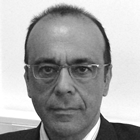 |
| WORKSHOP 2 |
|
 |
| . |
|
|
Costas Galiotis
FORTH/ ICE-HT and University of Patras, Greece
Invited – Workshop 2: 2D materials for Quantum Technologies
Costas Galiotis is the Principal Investigator (PI) of the ERC Advanced – Tailoring Graphene project. He is a Professor at the Department of Chemical Engineering (Univ. of Patras) and former Director of the Institute of Chemical Engineering Sciences (ICE-HT) which is one of the 7 academic research institutions of the Foundation of Research and Technology-Hellas (FORTH). In its over 26 years of operation FORTH/ ICE-HT has developed into a world-leading centre for the advancement of high quality scientific knowledge in the fields of material science and in the computer aided design and simulation of new materials and processes. It comprises of approximately 150 personnel and has a running yearly budget of 5 M€. Prof. Galiotis is also a member of the Board of Directors of FORTH (since July 2007). FORTH has been ranked as the first Research Centre in the field domain in Greece in 3 successive evaluations. Prof. Galiotis had an auspicious term of office as Director of the Institute in the years 2009-2014. Being also the coordinator of the Hellenic participation and national representative of “Graphene” he contributed in establishing the Graphene Center by joining the research forces of three FORTH institutes, ICE-HT, IESL and ICAM. Despite the Country's intense economic situation he expanded the Institute by literally setting the foundations to the Institute's new modern building that will house research laboratories.
|
|
|
|
|
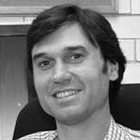 |
| WORKSHOP 4 |
|
 |
| . |
|
|
Gerardo Garcia Naumis
Universidad Nacional Autónoma de México, Mexico
Invited – Workshop 4: Theory of 2D Materials and Devices Simulation
Gerardo G. Naumis studied physics at the Mexico National University (UNAM). He made a posdoc in the Paris VI University in Paris with Prof. Richard Kerner. G. Naumis is the head of the Complex Systems department at the Physics Institute of UNAM at Mexico City. He is the author of more than 160 scientific papers and 14 book chapters concerning many different topics such as material science, 2D materials, complex systems, fluids, soft-matter, biology and statistical mechanics. He has been an invited professor in the USA, France, Spain, England, Portugal and Brazil and is associate editor of the journal Frontiers in Materials.
|
|
|
|
|
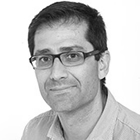 |
| KEYNOTE |
|
 |
| . |
|
|
Jose Antonio Garrido
ICREA/ICN2, Spain
Keynote – Plenary Session
Jose A. Garrido is an ICREA Research Professor at the Catalan Institute of Nanoscience and Nanotechnology (ICN2) and head of the Advanced Electronic Materials and Devices group. He received a master and PhD degree in Telecommunication Engineering from the Polytechnic University of Madrid, and a habilitation degree by the Technical University of Munich. His research interest focuses on aspects of the science and technology of novel electronic materials, with a strong emphasis on 2D materials such as graphene and MoS2, as well as in the application of these materials to bioelectronics and neural interfaces. He participates in major national and European projects and efforts to explore the development of novel neural interfaces for biomedical applications. Jose Garrido is co-founder of INBRAIN Neuroelectronics, where he is now the Chief Scientific Officer.
|
|
|
|
|
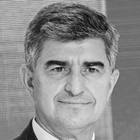 |
| KEYNOTE |
|
 |
| . |
|
|
Yury Gogotsi
Drexel University, USA
Keynote – Plenary Session
Dr. Yury Gogotsi is Distinguished University Professor and Charles T. and Ruth M. Bach Professor of Materials Science and Engineering at Drexel University. He also serves as Director of the A.J. Drexel Nanomaterials Institute. He received his MS (1984) and PhD (1986) from Kiev Polytechnic and a DSc degree from the Ukrainian Academy of Sciences in 1995. His research group works on 2D carbides and nitrides (MXenes), nanostructured carbons, and other nanomaterials for energy, water and biomedical applications. He published more than 800 papers, which have been cited more than 170,000 times. He has been recognized as a Highly Cited Researcher in Chemistry and Materials Science, and a Citations Laureate in Physics by Clarivate Analytics. He has received numerous awards for his research including a Chemistry of Materials Award from ACS, MRS Medal, S. Somiya Award from IUMRS, European Carbon Association Award, Materials Innovation Award from Materials Today, International Nanotechnology Prize (RUSNANOPrize), R&D 100 Awards from R&D Magazine and many other distinctions. He has been elected a Fellow of the European Academy of Sciences, World Academy of Ceramics, AAAS, MRS, ACerS, ECS, RSC and ISE. He holds honorary doctorates from several European universities
|
|
|
|
|
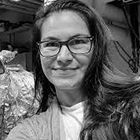 |
| WORKSHOP 10 |
|
 |
| . |
|
|
Antonija Grubišić Čabo
Groningen University, The Netherlands
Invited – Workshop 10: 2D water and nanofluidics
Antonija Grubišić-Čabo earned her Ph.D. from Aarhus University (Denmark) in 2017, specializing in graphene synthesis and ultrafast dynamics in 2D materials. Following her doctoral studies, she undertook postdoctoral research at Monash University (Australia) and KTH Royal Institute of Technology (Sweden). In 2022, Antonija joined the Zernike Institute for Advanced Materials at the University of Groningen as an Assistant Professor, where she leads the research group "Experimental Nanophysics with Advanced Spectroscopic and Structural Analysis Methods." Her current focus involves investigating the electronic and structural properties of nanomaterials in and out of equilibrium.
|
|
|
|
|
 |
| WORKSHOP 6 |
|
 |
| . |
|
|
Kari Hjelt
Chalmers Industrial Technic, Sweden
Invited – Workshop 6: Biomedical Applications
Kari has 20 years experience in building up corporate research and venture activities. He has been the founder and CEO of several start-up companies, as well as worked as director at Nokia Ventures Organization and at Nokia Research Centre. Dr. Kari Hjelt holds a PhD in Engineering Physics from Helsinki University of Technology, as well as an Executive MBA from the London Business School. Currently Kari works as Head of Innovation at the Graphene Flagship, where he also is a member of the Management Panel and the Executive Board
|
|
|
|
|
 |
| WORKSHOP 2 |
|
 |
| . |
|
|
Shirong Huang
TU Dresden, Germany
Invited – Workshop 2: 2D materials for Quantum Technologies
Dr. Shirong Huang has been a group leader in the field of digital olfaction sensor development at TU Dresden, Germany, since 2024. Currently, his research interest includes: low dimensional materials (LDM) synthesis, AI-enabled LDM-based smart gas sensors and electronic nose development, and their applications in emerging fields (e.g., molecular discrimination, VOCs identification, disease diagnosis, etc.), sensing signal processing, gas recognition, understanding of gas sensing mechanism, etc. He serves as the Youth Board Member of journal Applied Research and Brain-X, as well as member of IEEE Sensors Council Young Professional Committee, member of the Technical Program Committee (TPC) of ISOEN 2024 conference. He also serves as guest editor for several journals, such as Advanced Sensor Research, Analysis & Sensing, Small, etc. He is reviewer of several peer-reviewed journals, such as Biosensors and Bioelectronics, Small, Sensors and Actuators A: Physical, Advanced Intelligent Systems, Journal of Materials Chemistry, etc. So far, He has published more than 40 scientific papers in peer-reviewed journals and conference proceeds, such as Applied Physics Reviews, Small, Nano Research, Carbon, Advanced Intelligent Systems, Physical Chemistry Chemical Physics, etc., and 1 book chapter in Springer Nature
|
|
|
|
|
 |
| WORKSHOP 7 |
|
 |
| . |
|
|
Vincent Huc
Université Paris-Sud, France
Invited – Workshop 7: Advanced Characterization of 2DM and heterostructures
Vincent Huc is senior research scientist at the French national Center for Scientific Research (CNRS), and leader of a research group at the Université Paris-Saclay (France). He has completed his PhD degree devoted to molecular electronics at the French Atomic Energy commission (CEA-Saclay) in 1999. He then joined Pr. Thomas Ebbesen’s group at the ISIS institute (Strasbourg, France) for a post-doctoral stay, where he developed a process for the preparation of graphene. His research interest focuses on the synthesis of nanocarbons (nanotubes, nanocones…) and 2D materials by conventional CVD-based processes and also by means of organic chemistry. In this later case, his group is developing new processes for the molecular synthesis of extended 2D carbon nitrides networks. He’s also developing the use of these materials for electronics (transistors…). Co-founder and CSO of two start-ups (AJELIS and NOVECAL), He co-authored more than 60 publications and holds 11 international patents.
|
|
|
|
|
 |
| INDUSTRIAL FORUM |
|
 |
| . |
|
|
Francesca Iacopi
University of Technology Sydney, Australia
Invited - Industrial Forum
Professor Francesca Iacopi is an IEEE Fellow with over 20 years’ industrial and academic research expertise in semiconductor technologies, with 160 peer-reviewed publications and 10 granted US patents, spanning interconnects, CMOS devices and packaging. Her research focuses on the translation of basic scientific advances in nanomaterials and novel device concepts into implementable integrated technologies. She is known for her seminal work on the integration of porous dielectrics in on-chip interconnects, and for the invention of the alloy -mediated epitaxial graphene platform on SiC/Si pseudo-substrates. She was recipient of an MRS Gold Graduate Student Award (2003), an Australian Research Council Future Fellowship (2012), a Global Innovation Award in Washington DC (2014) and was listed among the most innovative engineers by Engineers Australia (2018). Francesca is an IEEE EDS Distinguished Lecturer and serves regularly in technical and strategic committees for IEEE and the Materials Research Society. She is an Elected Member to the IEEE EDS Board of Governors (2021, 2024) and serves in the Editorial Advisory Board for ACS Applied Nanomaterials, and the IEEE The Institute magazine. She is also the inaugural Editor-in-Chief of the IEEE Trans. on Materials for Electron Devices (IEEE T-MAT). She leads the Integrated Nanosystems Lab, in the Faculty of Engineering and IT, University of Technology Sydney. She is a Chief Investigator of the CoE in Transformative Meta-Optical Systems (TMOS), funded by the Australian Research Council.
|
|
|
|
|
 |
| PLENARY |
|
 |
| . |
|
|
Pablo Jarillo-Herrero
MIT, USA
Plenary Talk
Pablo Jarillo-Herrero is currently Cecil and Ida Green Professor of Physics at MIT. He received his “Licenciatura” in physics from the University of Valencia, Spain, in 1999. Then he spent two years at the University of California in San Diego, where he received a M.Sc. degree before going to the Delft University of Technology in The Netherlands, where he earned his Ph.D. in 2005. After a one-year postdoc in Delft, he moved to Columbia University, where he worked as a NanoResearch Initiative Fellow. He joined MIT as an assistant professor of physics in January 2008 and received tenure in 2015. He was promoted to Full Professor of Physics in 2018. His awards include the Spanish Royal Society Young Investigator Award (2006), an NSF Career Award (2008), an Alfred P. Sloan Fellowship (2009), a David and Lucile Packard Fellowship (2009), the IUPAP Young Scientist Prize in Semiconductor Physics (2010), a DOE Early Career Award (2011), a Presidential Early Career Award for Scientists and Engineers (PECASE, 2012), an ONR Young Investigator Award (2013), and a Moore Foundation Experimental Physics in Quantum Systems Investigator Award (2014). Prof. Jarillo-Herrero has been selected as a Highly Cited Researcher by Clarivate Analytics-Web of Science (2017-present), and was elected APS Fellow (2018), Fellow of the Quantum Materials Program of the Canadian Institute for Advanced Research (CIFAR, 2019), and Member at Large of the APS Division of Condensed Matter Physics (2019). Prof. Jarillo-Herrero is the recipient of the APS 2020 Oliver E. Buckley Condensed Matter Physics Prize, the 2020 Wolf Prize in Physics, the 2020 Medal of the Spanish Royal Physics Society, the 2021 Lise Meitner Distinguished Lecture and Medal, and the 2021 US National Academy of Sciences Award for Scientific Discovery.
|
|
|
|
|
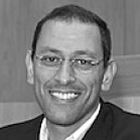 |
| KEYNOTE |
|
 |
| . |
|
|
Ado Jorio
Universidade Federal de Minas Gerais, Brazil
Keynote – Plenary Session
Ado Jorio is a Professor of Physics at the Federal University of Minas Gerais (UFMG), Brazil, since 2002. He founded the Laboratory of NanoSpectroscopy (LabNS) in 2006, where he works with research and development of scientific instrumentation in optics for the study of nanostructures with applications in new materials and biomedicine. He is well-known for his work on the metrology of low-dimensional systems based on Raman spectroscopy, mostly carbon-based nano-materials, and more recently he has been working on the development of nano-Raman spectroscopy.
|
|
|
|
|
 |
| WORKSHOP 1 |
|
 |
| . |
|
|
Dongkeun Ki
The University of Hong Kong, Hong Kong
Invited – Workshop 1: Twistronics, 2D Magnetism and Topological Phenomena
Dong-Keun Ki is an Assistant Professor at the Department of Physics of The University of Hong Kong. He received PhD from POSTECH in 2010 and had worked as a Postdoctoral Research Fellow and Senior Research Associate in the University of Geneva in Switzerland until 2018. He focuses on understanding quantum transport properties of various types of low-dimensional nanostructures, including graphene and 2D materials, with an aim to develop new quantum devices with unique functionalities originating from quantum-mechanical nature of quasiparticles in solids
|
|
|
|
|
 |
| INDUSTRIAL FORUM |
|
 |
| . |
|
|
Hyunseok Kim
University of Illinois Urbana-Champaign, USA
Invited - Industrial Forum
Hyunseok Kim is an assistant professor at the University of Illinois Urbana-Champaign. His research area includes compound semiconductors, 2D materials, their mixed-dimensional heterostructures for novel physical phenomena and coupling, and heterogeneous integration technologies for electronic, optoelectronic, and photonic device platforms. He received his B.S. at Seoul National University, and Ph.D. at UCLA. After Ph.D., he worked as a research scientist and a postdoctoral associate at MIT until he joined UIUC.
|
|
|
|
|
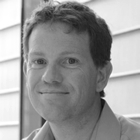 |
| KEYNOTE |
|
 |
| . |
|
|
Frank Koppens
ICREA/ICFO, Spain
Keynote – Plenary Session
Prof. Frank Koppens is group leader at the Institute of Photonic Sciences (ICFO). The quantum nano-optoelectronics group of Prof. Koppens focuses on both science and technology of novel two-dimensional materials and quantum materials. Koppens has received the ERC starting grant, the ERC consolidator grant, and five ERC proof-of-concept grants. Other awards include the Christiaan Hugyensprijs 2012, the national award for research in Spain, the IUPAP young scientist prize in optics, and the ACS photonics investigator award. Since 2018 Koppens is on the Clarivate list for highly cited researchers, in the physics category. Koppens has been elected as fellow of the American Physical Society in 2022. In total, Koppens has published more than 120 refereed papers (H-index 69).
|
|
|
|
|
 |
| WORKSHOP 8 |
|
 |
| . |
|
|
Jani Kotakoski
University of Vienna, Austria
Invited – Workshop 8: Ferroelectrics & Piezoelectric 2DM
Head of research unit Physics of Nanostructured Materials at the University of Vienna, Austria. Jani Kotakoski started his research career in his native Finland with atomistic simulations on nanomaterials after changing to experimental research during his postdoc years. His research focuses on atomic-resolution electron microscopy and spectroscopy of 2D materials and their controlled modification with the goal to tailor them for quantum technology and green energy applications
|
|
|
|
|
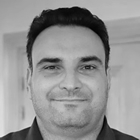 |
| WORKSHOP 5 |
|
 |
| . |
|
|
Emmanuel Kymakis
Hellenic Mediterranean University, Greece
Invited – Workshop 5: 2D Materials in India Showcase Session
Emmanuel Kymakis is a Full Professor at the Department of Electrical & Computer Engineering at the Hellenic Mediterranean University (HMU) and Director of the Institute of Emerging Technologies of the HMU Center for Research & Innovation. He earned his PhD in electrical engineering from the University of Cambridge in 2003. His multidisciplinary research lies at the interface between nanotechnology and electrical engineering and is centred on the development of printed optoelectronic and photovoltaic devices. He has published more than 150 research articles, which have attracted over 12.000 citations and an h-index of 58, while he has an extensive experience in the management of research and industrial projects (8,5 M€ research funding, design & implementation of 67 MWp of PV parks). Ηe is also included in the list of the top 2% of scientists in their respective fields by citation impact (PLoS Biol 17(8), e3000384). He has been an honorary lecturer at UConn and a recipient of an Isaac Newton and an EPSRC studentship. He was named as a 2014 ChemComm Emerging Investigator and has received three National Excellence Awards. He has served as a member of the founding General Assembly of the Hellenic Foundation for Research & Innovation (HFRI), a member of the Engineering sectoral scientific council of the National Council for Research & Innovation of Greece (NCRI) and the work package leader of Energy Generation of the EU FET-Flagship Initiative Graphene
|
|
|
|
|
 |
| KEYNOTE |
|
 |
| . |
|
|
Mario Lanza
KAUST, Saudi Arabia
Keynote – Plenary Session
Mario Lanza got a PhD in Electronic Engineering in 2010 at the Autonomous University of Barcelona. After completing postdocs at Peking University and Stanford University, in 2013 he joined Soochow University (in China), where he promoted until the rank of Full Professor. Since October 2020 he is an Associate Professor of Materials Science and Engineering at the King Abdullah University of Science and Technology (in Saudi Arabia), where he leads a group formed by 10 PhD students and postdocs. His research focuses on how to improve electronic devices, circuits and microchips using 2D materials, with special emphasis on resistive switching applications. Professor Lanza has published over 200 research articles, including 1 Nature, 2 Science, 7 Nature Electronics and multiple IEDM proceedings (among many others), and has registered four patents – one of them granted with 1 million USD. Professor Lanza has received multiple top awards, like the IEEE Fellow and the Marie Curie Fellow (among many others), and he is a Distinguished Lecturer from the IEEE – Electron Devices Society. Professor Lanza is the editor-in-chief of the journal Microelectronic Engineering (Elsevier), and he serves in the executive board of many other societies, journals and conferences, including the IEDM and IRPS
|
|
|
|
|
 |
| KEYNOTE |
|
 |
| . |
|
|
Jeanie Lau
The Ohio State University, USA
Keynote – Plenary Session
Chun Ning (Jeanie) Lau is a Professor in the Department of Physics at The Ohio State University. She received her BA in physics from University of Chicago in 1994, and PhD in physics from Harvard in 2001. She was a research associate at Hewlett Packard Labs in Palo Alto from 2002 to 2004, before joining University of California, Riverside in 2004 as an assistant professor. She was promoted to associate professor in 2009 and full professor in 2012. Starting January 2017 she moved to The Ohio State University. The honors and awards she has received include the NSF CAREER award, the PECASE award and APS Fellow. Her research focuses on electronic, thermal and mechanical properties of nanoscale systems, in particular, graphene and other two-dimensional systems.
|
|
|
|
|
 |
| INDUSTRIAL FORUM |
|
 |
| . |
|
|
Gwan-Hyoung Lee
Seoul National Univ./S-Graphene Co, South Korea
Invited - Industrial Forum
Prof. Gwan-Hyoung Lee is a professor at Department of Materials Science and Engineering of Seoul National University (SNU). He completed his Ph.D. in the same field at SNU in 2006. Following a three-year tenure at Samsung Electronics, he pursued postdoctoral research at Columbia University in 2010. He served on the faculty of Yonsei University from 2014 to 2018. Additionally, he is the CEO of S-Graphene Co., which focuses on the development of graphene-coated silicon anodes for lithium-ion batteries. His research explores the electrical, mechanical, and optical properties of two-dimensional (2D) materials and the application of 2D material-based heterostructures in electrical and optoelectronic devices
|
|
|
|
|
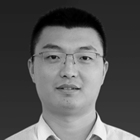 |
| WORKSHOP 6 |
|
 |
| . |
|
|
Zhang Lisheng
Beijing Advanced Materials Industry Promotion Association, China
Invited – Workshop 6: Biomedical Applications
Dr. Lisheng Zhang Graduated from Ningbo Institute of Materials Technology and Engineering, Chinese Academy of Sciences. Now he is the founder of DT New Materials and the vice-secretary of Beijing Advanced Materials Industry Promotion Association. DT New Materials was founded in 2016 with the core technology and service team and have made a thorough research on new materials industry such as chemical new materials, carbon materials, bio-based materials, new energy materials and semiconductor materials. The company provides local governments with industrial (park) planning, precise investment promotion, and provides enterprises with achievement transformation, technology docking, and provides investment & financing institutions with high-quality projects. Currently, the company is headquartered in Ningbo, Zhejiang Province, with subsidiaries in Nanjing, Shanghai and Shenzhen. The company has a team of 98 people, including 28 people with master's degree or above. The company has set up three angel funds (Hefei Hangbang Hydrogen, Hefei Hangbang Helium, Hefei Hangbang Lithium) and invested in more than ten incubation projects.
|
|
|
|
|
 |
| INDUSTRIAL FORUM |
|
 |
| . |
|
|
Cecilia Mattevi
Imperial College London, UK
Invited - Industrial Forum
Cecilia Mattevi is a Royal Society University Research Fellow in the Department of Materials at Imperial College London since October 1, 2012. Her research interests centre on science and engineering of novel 2D atomically thin semiconducting materials to enable applications in optoelectronics and energy storage. Mattevi’s research group focuses on the synthesis of these materials and tailoring thier properties, and on the fabrication of devices based on planar structures and on highly porous 3D hierarchical structures where a diverse range of assembly methods is employed.
|
|
|
|
|
 |
| WORKSHOP 2 |
|
 |
| . |
|
|
Cécilia Ménard-Moyon
CNRS, France
Invited – Workshop 2: 2D materials for Quantum Technologies
Dr. Cécilia Ménard-Moyon is Researcher at CNRS in the Laboratory of Immunology, Immunopathology and Therapeutic Chemistry in Strasbourg (France). Her research interests are focused on the functionalization of different types of nanoparticles (e.g., carbon-based nanomaterials, 2D materials) for biomedical applications, the self-assembly of amino acid derivatives and peptides, as well as the formation of hydrogels for on-demand drug delivery. She has published 103 articles and 10 book chapters (h-index: 45, > 5100 citations). She is the coordinator of the Horizon Europe Marie Skłodowska-Curie Actions Doctoral Networks “Melomanes” project (2023-27) on the synthesis of multifunctional magnetic nanoparticles for combination therapy to treat metastatic melanoma
|
|
|
|
|
 |
| INDUSTRIAL FORUM |
|
 |
| . |
|
|
Pierre Morin
IMEC, Belgium
Invited - Industrial Forum
Pierre Morin, Ph.D. has been with imec since 2017, starting with the responsibility for the thin films for patterning and FEOL silicon technologies. He is currently in charge of the research and development for advanced deposited channels (semiconductor metal oxide and 2D transition metal dichalcogenides process and material studies), gate stacks for silicon and 2D technologies, and the materials for thermally stable contacts. Prior to joining imec, Pierre Morin was with STMicroelectronics, being the lead process and material engineer for logic and memory technologies. He has been an assignee at the IBM alliance in Albany NY from 2012 to 2015, developing FinFET and FDSOI. Before joining STMicroelectronics in 2000, Pierre Morin has been with Phillips. Pierre Morin received a degree from the “Ecole Nationale Supérieure de Chimie et Physique” of Bordeaux/France (ENSCPB) in 1991 and a PhD degree from the University of Paris/France in 1995, in the field of material science and electronics.
|
|
|
|
|
 |
| WORKSHOP 7 |
|
 |
| . |
|
|
Aitor Mugarza
ICN2, Spain
Invited – Workshop 7: Advanced Characterization of 2DM and heterostructures
Aitor Mugarza is ICREA Research Professor and Group Leader of the Atomic Manipulation and Spectroscopy Group at ICN2 since 2013. He has been Marie Curie Fellow at the Lawrence Berkeley National Laboratory, USA, and Ramon y Cajal Fellow at ICN2. He is author of 75+ articles, and of 60+ invited talks at international conferences, universities and schools. He is founder and coordinator of the SPM Platform that is being created at ALBA synchrotron. His research activity is based on the investigation of quantum properties of matter on the nanoscale, and developing strategies to manipulate them with atomic precision.
|
|
|
|
|
 |
| INDUSTRIAL FORUM |
|
 |
| . |
|
|
Kazuo Muramatsu
Incubation Alliance.Inc. , Japan
Invited - Industrial Forum
Kazuo Muramatsu is the CEO of Incubation Alliance, Inc. (InALA) based in Kobe, Japan. He completed his studies in materials sciences at Toyohashi University of Technology in 1985. At university, he was engaged in research on graphite intercalation compounds, and also collaborated with Dr. Ralph Setton(CNRS), one of the pioneers of graphene. He joined Kobe Steel, Ltd. and was engaged in the development of “new carbon” using Hot Isostatic Pressing (HIP) equipment, and worked on the development and commercialization of graphene electrodes for hydrogen generators, carbon substrates for HDD and substrates for semiconductor processes. He founded InALA in 2007 and is promoting the development mass synthesis methods for graphene and commercialization of Graphene Flower® products.
|
|
|
|
|
 |
| INDUSTRIAL FORUM |
|
 |
| . |
|
|
Rahul Raveendran Nair
University of Manchester, UK
Invited - Industrial Forum
Rahul R. Nair is a Carlsberg/Royal Academy of Engineering Research Chair and Professor of Materials Physics at the National Graphene Institute (NGI), Henry Royce Institute, and Department of Chemical Engineering at the University of Manchester. His current research focuses on molecular transport through sub-nanometer two-dimensional (2D) capillaries and exploring its potential applications. He has published over 60 highly cited peer‐refereed research articles, including five Science, five Nature, and more than a dozen Nature series publications during the last twelve years. His awards include a Leverhulme Early Career Fellowship from the Leverhulme Trust, Royal Society University Research Fellowship from the Royal Society, IUPAP Young Scientist Award (2014) from the International Union of Pure and Applied Physics, the Moseley Medal and Prize (2015) from the Institute of Physics, European Research Council (ERC) starting grant (2015), Lee Hsun Lecture Award on Materials Science (2018) from the Institute of Metal Research, Chinese Academy of Sciences, the Creativity Prize (2018) from the Prince Sultan Bin Abdulaziz International Prize for Water (PSIPW), and the Philip Leverhulme Prize (2018) from the Leverhulme Trust. He has also been selected as a Highly Cited Researcher from 2016 by Thomson Reuters
|
|
|
|
|
 |
| WORKSHOP 1 |
|
 |
| . |
|
|
Efrén Navarro Moratalla
Universitat de Valencia, Spain
Invited – Workshop 1: Twistronics, 2D Magnetism and Topological Phenomena
Efrén is a group leader at the Instituto de Ciencia Molecular (ICMol) and the principal investigator of several research projects funded by different agencies: regional government (Generalitat Valenciana SEJI), La Caixa foundation (Junior Leader fellowship 2017) and European Research Coincil (ERC Starting Grant). He received his M.Sc. in Chemistry (first honors and extraordinary award) in 2007 and a second M.Sc. in Nanoscience and Nanotechnology (extraordinary master award) in 2009, both from the Universitat de València. His PhD thesis (cum laude, Extraordinary Doctorate Award) explored the combination of different materials to explore multifunctional physics in low-dimensions. He then moved to the Massaschusetts Institute of Technology (MIT) as a postdoctoral Ramón Areces fellow before moving back to Spain where he founded Crisol lab.
|
|
|
|
|
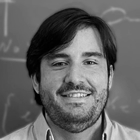 |
| WORKSHOP 1 |
|
 |
| . |
|
|
Hector Ochoa De Eguileor Romillo
Columbia University, USA
Invited – Workshop 1: Twistronics, 2D Magnetism and Topological Phenomena
I am a theorist interested in problems at the intersection between hard and soft condensed matter physics. I completed my PhD in Universidad Autónoma de Madrid in 2014, where I worked on problems related to the physical properties of graphene and other 2D materials. After that, I moved to the University of California, Los Angeles, where I worked on spintronics. Last year I was an Ikerbasque Research Fellow at DIPC in San Sebastian (Spain), and currently I am an Associate Research Scientist and Adjunct Professor of Physics at Columbia University in New York.
|
|
|
|
|
 |
| INDUSTRIAL FORUM |
|
 |
| . |
|
|
Barbaros Ozyilmaz
NUS, Singapore
Invited - Industrial Forum
Professor Barbaros Özyilmaz is best known for his work on developing new device applications based on 2D materials such as graphene, black phosphorus, and monolayer amorphous carbon (MAC). He graduated in 1999 from RWTH Aachen University, Germany, with his Diplomarbeit in Physics at the European High Magnetic Field Laboratory of the Max-Planck-Institute in Grenoble, France. He undertook his PhD studies (1999-2004) with Prof Andrew Kent at New York University in collaboration with IBM pioneering spin transfer torque. He did his postdoctoral work (2004-2007) at Columbia University in Prof Philip Kim’s group pioneering graphene research in the USA. He joined the Physics Department at NUS in 2007 as an Assistant Professor and was instrumental in establishing Graphene Research in Singapore. He is currently the Deputy Director of the NUS Centre for Advanced 2D material (CA2DM) and has greatly contributed to establishing NUS as one of the globally leading Centre’s for 2D material research. Since 2019 he is also the Department Head of the Materials Science and Engineering Department at NUS. He is the recipient of numerous awards including the NRF Fellowship and the NRF Investigator Award, NUS Young Investigator Award and the Institute of Physics Award, Singapore.
|
|
|
|
|
 |
| KEYNOTE |
|
 |
| . |
|
|
Tomas Palacios
MIT, USA
Keynote – Plenary Session
Tomás Palacios is the Clarence J. LeBel Professor of Electrical Engineering and the director of the Microsystems Technology Laboratories (MTL) at MIT. He received his PhD from the University of California - Santa Barbara in 2006, and his undergraduate degree in Telecommunication Engineering from the Polytechnical University of Madrid, Spain, in 2001. His current research focuses on demonstrating new electronic devices and applications for novel semiconductor materials such as graphene and gallium nitride. His work has been recognized with multiple awards including the Presidential Early Career Award for Scientists and Engineers, the 2012 and 2019 IEEE George Smith Award, and the NSF, ONR, and DARPA Young Faculty Awards, among many others. Prof. Palacios is the founder and director of the MIT MTL Center for Graphene Devices and 2D Systems, as well as the Chief Advisor and co-founder of Finwave Semiconductor, Inc. He is a Fellow of IEE
|
|
|
|
|
 |
| INDUSTRIAL FORUM |
|
 |
| . |
|
|
Vincenzo Palermo
CNR-ISOF, Italy
Invited - Industrial Forum
Vincenzo Palermo is the director of the CNR Institute for Organic Synthesis and Photoreactivity (ISOF) in Bologna, Italy, and associated professor of Chalmers University of Technology (Sweden). He uses nanotechnology and supramolecular chemistry to create new materials for electronics, aerospace and biomedical applications. He published >200 scientific articles on international journals in chemistry, nanotechnology and materials science (>11 000 citations, h-index 53), collaborating with key industrial partners in Europe (Airbus, FCA, Leonardo, BASF, Nokia, STMicroelectronics etc.). He has been awarded the Lecturer Award for Excellence of the Federation of European Materials Societies (FEMS), the Research Award of the Italian Society of Chemistry (SCI) and the Science dissemination awards of the Italian Book Association.
|
|
|
|
|
 |
| INDUSTRIAL FORUM |
|
 |
| . |
|
|
Andrew Pollard
NPL, UK
Invited - Industrial Forum
Andrew Pollard leads NPL’s research into the structural and chemical characterisation of graphene and related 2D materials, with a focus on enabling industrial commercialisation in this area. This metrology research has allowed the development of several international standards addressing the measurement of 2D materials, either published or in progress within the ISO 'Nanotechnologies' Technical Committee (TC229). Andrew is a Visiting Lecturer at the University of Manchester, the co-chair of the VAMAS Technical Working Area 'TWA 41: Graphene and Related 2D Materials', Metrologist-in-Residence at the Henry Royce Institute, the Secretary of the 'Materials and Characterisation' Group at the Institute of Physics (IOP) and the recipient of the Royal Society of Chemistry's '2018 Rising Star in Industry Award'.
|
|
|
|
|
 |
| WORKSHOP 8 |
|
 |
| . |
|
|
Vincent Renard
Université Grenoble Alpes / CEA, France
Invited – Workshop 8: Ferroelectrics & Piezoelectric 2DM
Vincent Renard is an associate professor at the University of Grenoble. He started his career on transport measurements on nano-structures where his main achievements were the first experimental evidence of the transition between the diffusive and ballistic regimes of electron-electron interaction in 2D electron gases and the first report of an interaction related correction to the conductivity in ballistic quantum point contacts above the quantum conductance. He then moved to material science where he discovered the chemically assisted catalyst preparation in silicon nanowire growth in the Vapour-Solid-Solid regime. Since 2011, he moved to the study of graphene by scanning tunneling microscopy where his main contributions are the uncovering of the strong effect of heterostrain on the electronic properties of twisted bilayer graphene and the investigation of graphene's topology by quasi-particle interferences.
|
|
|
|
|
 |
| INDUSTRIAL FORUM |
|
 |
| . |
|
|
Huije Ryu
Samsung Advanced Institute of Technology, South Korea
Invited - Industrial Forum
Dr. Huije Ryu received his PhD in Materials Science and Engineering from the Seoul National University on both science and applications of 2D materials. Currently, he is a Staff Researcher of the 2D Device Technical Unit at Samsung Advanced Institute of Technology (SAIT) focusing on the application of 2D materials in next-generation semiconductor devices. His primary research focuses on characterizing and engineering interfaces in 2D material-based devices, particularly focusing on dielectric-2D material and metal-2D material interfaces, with the aim of enhancing the performance of 2D devices.
|
|
|
|
|
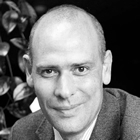 |
| WORKSHOP 3 |
|
 |
| . |
|
|
Paolo Samorì
Université de Strasbourg, France
Invited – Workshop 3: 2DM Chemistry and Energy Applications
Paolo Samorì is Distinguished Professor at the Université de Strasbourg, Director of the Institut de Science et d’Ingénierie Supramoléculaires (ISIS) and Director of the Nanochemistry Laboratory. He is Foreign Member of the Royal Flemish Academy of Belgium for Science and the Arts (KVAB), Fellow of the Royal Society of Chemistry (FRSC), Fellow of the European Academy of Sciences (EURASC), Member of the Academia Europaea, Member of the European Academy of Sciences and Arts, Fellow of International Engineering and Technology Institute (IETI), Socio corrispondente, Sezione di Scienze Matematiche, Fisiche e Naturali ; Accademia Nazionale di Scienze Lettere e Arti di Modena, Fellow of the Materials Research Society (MRS), Fellow of the University of Strasbourg Institute for Advanced Study (USIAS), Senior Member of the Institut Universitaire de France (IUF). He has obtained a Laurea (master’s degree) in Industrial Chemistry at University of Bologna in 1995. In 2000, he has received his PhD in Chemistry from the Humboldt University of Berlin (Prof. J. P. Rabe). He has been permanent research scientist at Istituto per la Sintesi Organica e la Fotoreattività of the Consiglio Nazionale delle Ricerche of Bologna from 2001 to 2008 and Visiting Professor at ISIS from 2003 to 2008. He has published 400+ papers on nanochemistry, supramolecular sciences, materials chemistry, and scanning probe microscopies with a specific focus on graphene and other 2D materials as well as functional organic/polymeric and hybrid nanomaterials for application in optoelectronics, energy and sensing. He has been awarded numerous prestigious prizes, including the E-MRS Graduate Student Award (1998), the MRS Graduate Student Award (2000), the IUPAC Prize for Young Chemists (2001), the Vincenzo Caglioti Award (2006), the Nicolò Copernico Award (2009), the Guy Ourisson Prize (2010), the ERC Starting Grant (2010), the CNRS Silver Medal (2012), the Catalán-Sabatier Prize (2017), the Grignard-Wittig Lectureship (2017), the ERC Proof of Concept Grant (2017), the RSC Surfaces and Interfaces Award (2018), the Blaise Pascal Medal in Materials Science (2018), the Pierre Süe Prize (2018), the ERC Advanced Grant (2019), the “Étoiles de l’Europe” Prize (2019), the ERC Proof of Concept Grant (2020) and the RSC/SCF Joint Lectureship in Chemical Sciences (2020). He is Associate Editor of Nanoscale and Nanoscale Advances (RSC) and Member of the Advisory Boards of Advanced Materials, Small, ChemNanoMat, ChemPhysChem, ChemPlusChem, ChemSystemsChem and SmartMat (Wiley-VCH), Chemical Society Reviews, Nanoscale Horizons, Chemical Communications and Journal of Materials Chemistry (RSC), ACS Nano and ACS Omega (ACS), and BMC Materials (Springer Nature).
|
|
|
|
|
 |
| WORKSHOP 5 |
|
 |
| . |
|
|
Ali Shaygan Nia
TU Dresden, Germany
Invited – Workshop 5: 2D Materials in India Showcase Session
Ali Shaygan Nia is a group leader at the Chair of Molecular Functional Materials at TU Dresden since 2018, and at the Max Planck Institute of Microstructure Physics since 2023. He also serves as the Business Developer of Graphene Flagship from 2020-2023. He received his B.Sc. in Chemical Engineering from Isfahan University of Technology (Iran) and his M.Sc. and Ph.D. in Polymer Chemistry from Martin Luther University Halle-Wittenberg (Germany). He is the inventor of more than 10 patents and patent applications and recently won with his team a prestigious innovation project in Germany (EXIST Transfer of Research) to bring printed batteries and supercapacitors to commercialization level. His current interests include the exfoliation and functionalization of new 2D materials via wet chemistry, the development of functional 2D material inks/pastes/formulations for printing technologies, and the fabrication of energy storage devices beyond lithium-ion batteries (LIBs) such as supercapacitors, dual-ion batteries and zinc batteries
|
|
|
|
|
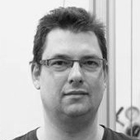 |
| WORKSHOP 9 |
|
 |
| . |
|
|
Zdenek Sofer
UCT Prague, Czech Republic
Invited – Workshop 9: 2DM based composites, coatings, foams and membranes
Zdeněk Sofer has been a Full Professor at the University of Chemistry and Technology Prague, Czech Republic, since 2019. He also received his Ph.D. at the University of Chemistry and Technology Prague in 2008. During his Ph.D., he spent one year at Forschungszentrum Julich (Peter Grünberg Institute, Germany), followed by postdoctoral experience in University of Duisburg-Essen, Germany. His research interests include semiconductors and 2D materials, their synthesis, crystal growth, chemical modifications and functinalization. He is particularly focused on various applications of two-dimensional materials including energy storage and conversion. He has published more than 350 papers, received more than 13,000 citations, and has the h-index of 56. He was the recipient of the Rector award for young researcher in 2013 and 2016 as well as the Neuron Impulse award in 2016 and the award of the Czech Science Foundation President and the UCT Prague rector award in 2019.
|
|
|
|
|
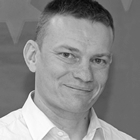 |
| INVITED |
|
 |
| . |
|
|
Christoph Stampfer
RWTH Aachen University and Forschungszentrum Jülich, Germany
Invited – Plenary Session
Christoph Stampfer is Professor of Experimental Solid State Physics at the RWTH Aachen University and researcher at the Forschungszentrum Jülich. His primary interests include graphene and 2D materials research, quantum transport, and Raman spectroscopy. He holds a Dipl.-Ing. degree in Technical Physics from the TU Vienna (Austria) and a Ph.D. in Mechanical Engineering from the ETH Zurich (Switzerland). He was a PhD student in the Micro and Nano Systems group at the ETH Zurich from 2003 to 2007 and postdoc at the Solid State Laboratory (Ensslin-Group at ETH Zurich) from 2007 to 2009. From 2009 till 2013 he was JARA-FIT Junior Professor at the RWTH Aachen and the Forschungszentrum Jülich. He has been awarded with an ERC Starting Grant to work on "Graphene Quantum Electromechanical Systems" in 2011, was a member of the Young Scientist community of the World Economic Forum and received in 2018 an ERC Consolidator Grant to work on “2D Materials for Quantum Technologies”. He is also co-founder of phyphox, a free physics App designed to improve science teaching on a global scale.
|
|
|
|
|
 |
| INDUSTRIAL FORUM |
|
 |
| . |
|
|
Agnès Tempez
HORIBA FRANCE SAS, France
Invited - Industrial Forum
Agnès Tempez is an application market specialist for the advanced materials/semiconductors market at HORIBA France. She is part of the Nanoscopy team to develop AFM-Raman applications. She is also PP-TOFMS product manager. She holds a Ph.D. in Analytical Chemistry from the University of Houston, Texas. She worked as a research scientist at Ionwerks Inc., Houston to develop time of flight mass spectrometry instrumentation for materials characterization and MALDI/ion mobility coupling for complex biological samples.
|
|
|
|
|
 |
| KEYNOTE |
|
 |
| . |
|
|
Mauricio Terrones
The Pennsylvania State University, USA
Keynote – Plenary Session
He obtained his B.Sc. degree in Engineering Physics with first class honors at Universidad Iberoamericana. He then received his D.Phil. degree from University of Sussex in 1998 under the supercision of Harold W. Kroto. He is co-authored more than 650 publications in international journals and counts with more than 88,000 citations. Some of his accomplishments include: 1) Fellow of APS, AAAS, TWAS and RSC; 2) Highly Cited Researcher (WoS; 2017-present); 3) The Jubilee Professorship at Chalmers University of Technology (Sweden; 2016), 4) UNESCO-Javed Huasain Prize for Young Scientists and Albert Einstein Medal (France, 2001), etc. He is Evan Pugh University Professor and the George A. and Margaret M. Downsbrough Department Head (Department of Physics, Penn State). He is also the Founder Director of the Center for 2-Dimensional and Layered Materials at Penn State, and the NSF-IUCRC Center for Atomically Thin Multifunctional Coatings (ATOMIC). He is also the Editor-in-Chief of the journal Carbon (IF=10.9).
|
|
|
|
|
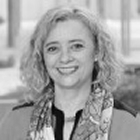 |
| WORKSHOP 3 |
|
 |
| . |
|
|
Lourdes F. Vega
Research and Innovation Center for Graphene and 2D Materials (RIC2D), United Arab Emirates
Invited – Workshop 3: 2DM Chemistry and Energy Applications
|
|
|
|
|
 |
| INVITED |
|
 |
| . |
|
|
Aravind Vijayaraghavan
The University of Manchester, UK
Invited – Plenary Session
Aravind Vijayaraghavan is Professor of Nanomaterials at The University of Manchester, where he leads the Nanofunctional Materials Group. His research focuses on the development of novel applications of 2-dimensional materials and the underpinning science. He has published over 100 papers in international journals, filed 7 patents and established 2 spin-out companies, Grafine Ltd and Atomic Mechanics Ltd. He is also the faculty Head of Business Engagement in Advanced Manufacturing.
|
|
|
|
|
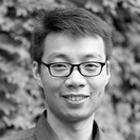 |
| WORKSHOP 5 |
|
 |
| . |
|
|
Minghao Yu
TU Dresden, Germany
Invited – Workshop 5: 2D Materials in India Showcase Session
Dr. Minghao Yu, PI, holds an independent research group at Technische Universität Dresden. His research interest includes 1) the development of novel organic and inorganic 2D layered materials, 2) the investigation of advanced artificial interphases and electrolytes for next-generation batteries, 3) fundamental charge and ion dynamics during electrochemical energy storage processes, and 4) sustainable energy storage device fabrication, including supercapacitors, hybrid-ion capacitors, aqueous batteries, dual-ion batteries, and multivalent metal (Zn, Mg, Al) batteries. He has published more than 120 scientific articles which have attracted more than 20,000 citations with an H-index of 69 (Web of Science). Besides, he is also an associated member of the Center for Advancing Electronics Dresden (cfaed), an associated group leader at Max-Planck-Institut für Mikrostrukturphysik, a highly cited researcher (Clarivate Analytics, 2018-now), 2023 ERC Starting Grant winner, and a Fellow of the Young Academy of Europe
|
|
|
|
|
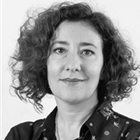 |
| WORKSHOP 4 |
|
 |
| . |
|
|
Zeila Zanolli
Utrecht University, The Netherlands
Invited – Workshop 4: Theory of 2D Materials and Devices Simulation
Since July 1st, 2020, Zeila Zanolli joined Utrecht University as associate professor in Quantum Chemical Modelling at the Chemistry Department/Debye Institute for Nanomaterials Science. Until then (2018 – 2020) she was a Ramon y Cajal Fellow at ICN2, Barcelona (Spain), an excellence program of the Spanish Ministry for Economy, Industry and Competitiveness (MINECO). In 2016 – 2018, she leaded the Nanospintronics Group at the Physics Dept of RWTH Aachen University, funded by the DFG. In 2015 – 2012 she was Marie Curie Intra-European Fellow at Forschungszentrum Jülich (Germany). She is a research group leader and Steering Committee member of the European Theoretical Spectroscopy Facility (ETSF). Since 2018, Dr. Zanolli serves in the Executive Committee of the MaX (MAterials design at the eXascale) European Centre of Excellence which enables materials modelling, simulations, discovery and design at the frontiers of the current and future High Performance Computing (HPC), High Throughput Computing (HTC) and data analytics technologies. Since 2019 Dr. Zanolli serves in the Editorial College of SciPost Physics, a Free Open Access publication portal. In 2017 she has been elected Fellow of the Young Academy of Europe (YAE), a pan-European network of scientists active in science policy, and since 2018 she is board member and treasurer of the YAE.
|
|
|
|
|
 |
| INDUSTRIAL FORUM |
|
 |
| . |
|
|
Amaia Zurutuza
Graphenea, Spain
Invited - Industrial Forum
She received her Ph.D. degree in polymer chemistry from the University of Strathclyde (Glasgow, UK) in 2002. From 2001 to 2003, she was a Postdoctoral Research Fellow working in two European projects related to molecularly imprinted polymers. In 2004, she joined Ferring Pharmaceuticals (previously Controlled Therapeutics) where she worked in the research of new controlled drug delivery systems as a Senior Polymer Scientist. Her contribution led to the granting of three patents in novel biodegradable and biostable polymers for the controlled release of active compounds. In 2010, she became the Scientific Director of Graphenea. At Graphenea, she leads the research and development activities on graphene-based materials. Since joining Graphenea, she has so far filed for fifteen patents and published more than 82 publications in peer reviewed journals, including Nature and Science. Principal Investigator in 21 EU FP7/H2020 funded research projects, 16 collaborative projects including the Graphene Flagship and 3 people training network projects. In the Graphene Flagship, she is a member of the executive board and world package leader in the wafer scale integration (Graphene Flagship) and deputy leader in the wafer scale growth (Experimental Pilot Line) workpackages. In addition, she has also given more than 52 invited talks in international conferences. Her research interests include the synthesis, characterization, and future industrial applications of graphene.
|
|
|
|
|
| |





